- For both caregivers of children with and without disabilities, the usage of non-parental childcare significantly decreased from pre-COVID to May, and then slowly and gradually increased over time.
- At most time-points, the percentage of using non-parental childcare did not differ significantly by children’s disability status.
- At Week 5 (early May), families of children with disabilities reported significantly higher percentage of using non-parental childcare compared to families of children without disabilities.
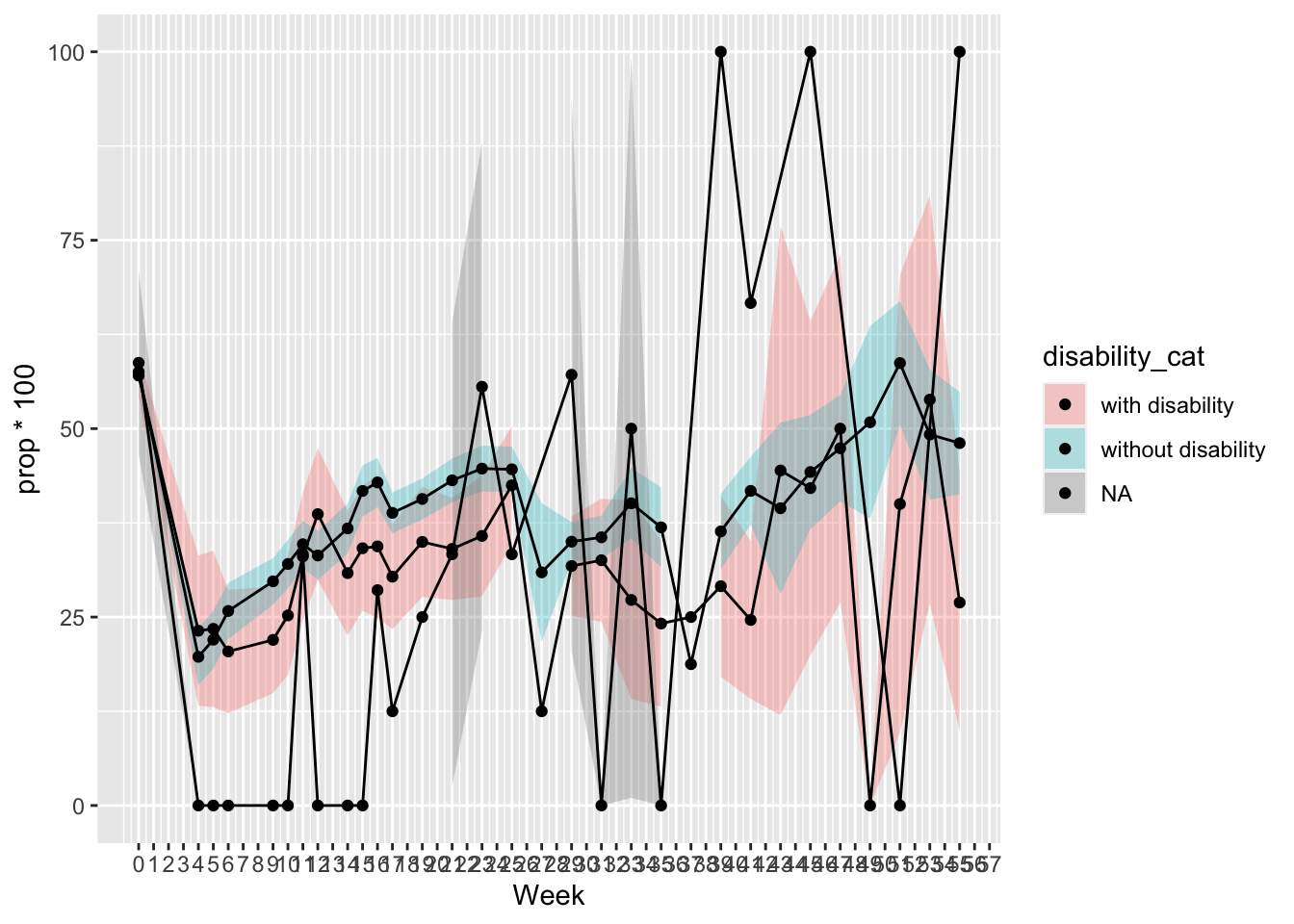
- For caregivers of children with disabilities, the percentage of using center-based childcare kept decreasing from right-after COVID until June, and then slowly and gradually increased over time; Meanwhile, their percentage of using other types of childcare (home-based, paid, and unpaid) increased on Week 5 (early May), then decreased until June, and then slowly and gradually increased over time.
- For caregivers of children without disabilities, the percentage of using center-based and other types of non-parental childcare decreased from pre-COVID to right after COVID, and then gradually and slowly increased over time.
- At Week 5 (early May), families of children with disabilities reported significantly higher percentage of using center-based and other types of non-parental childcare compared to families of children without disabilities.
## Warning: Removed 3 row(s) containing missing values (geom_path).
## Warning: Removed 11 rows containing missing values (geom_point).
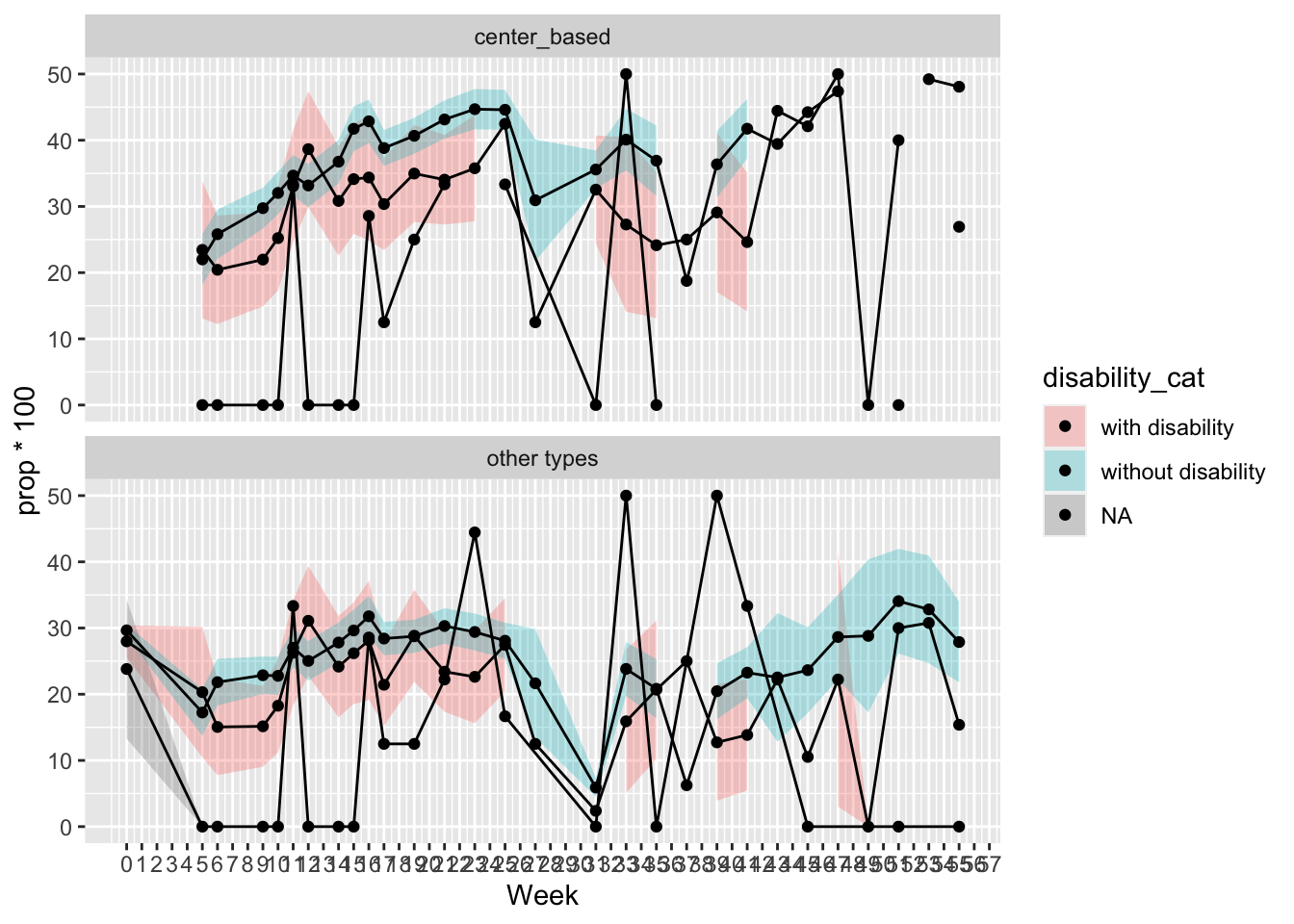
- A higher percentage of caregivers of children with disabilities reported that they were concerned not able to return to work because of lacking appropriate childcare. But the difference was not statistically significant.

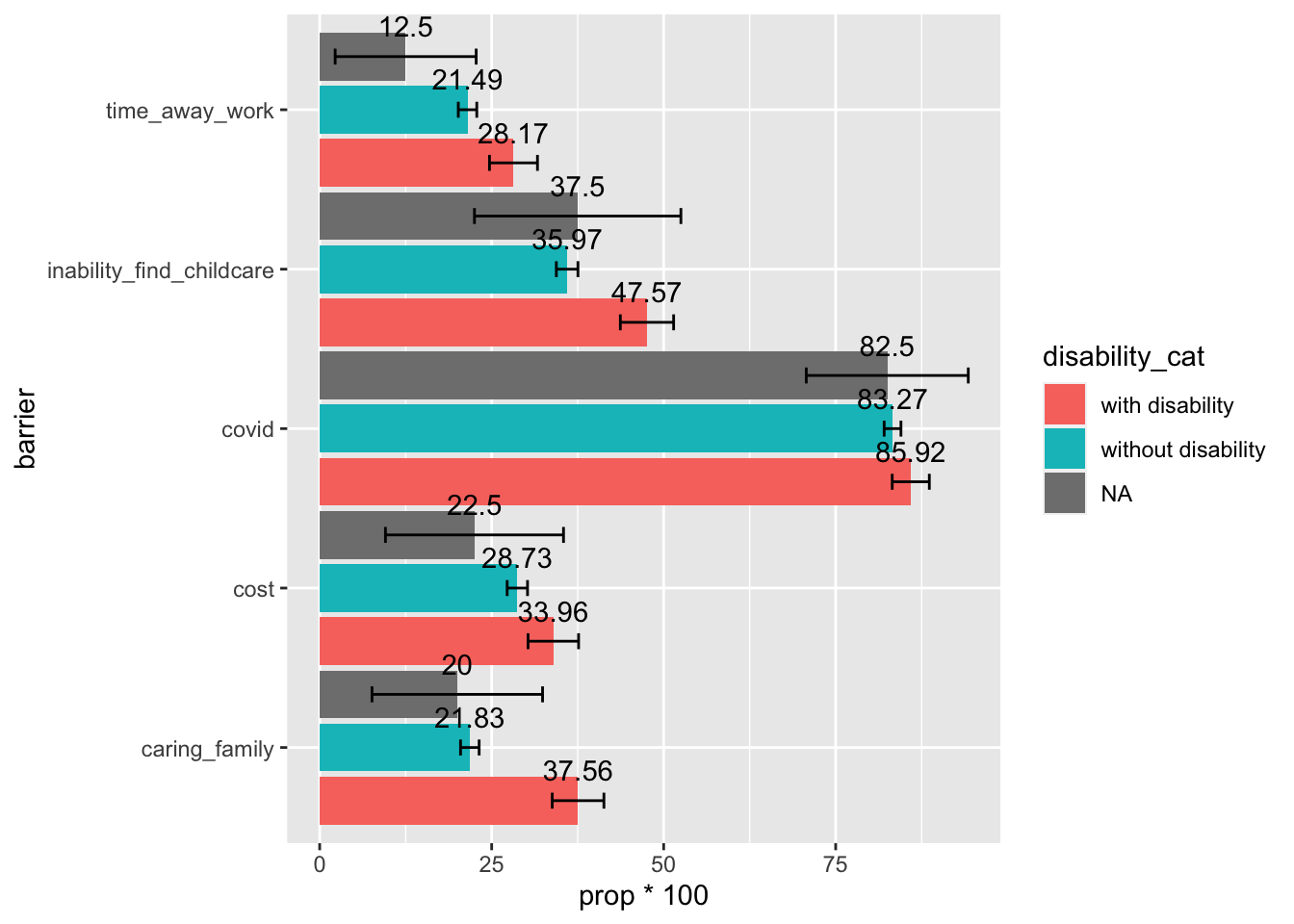
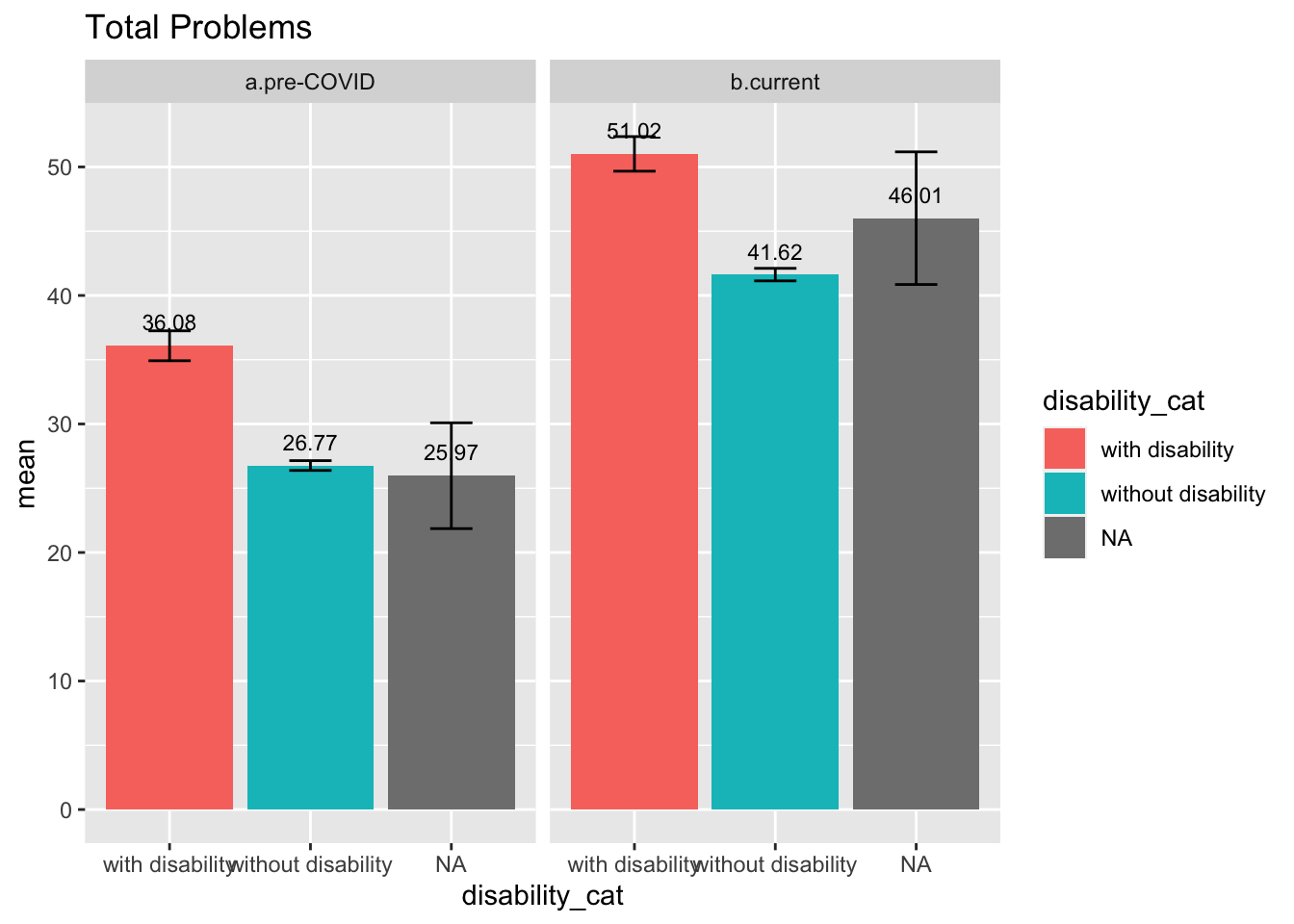
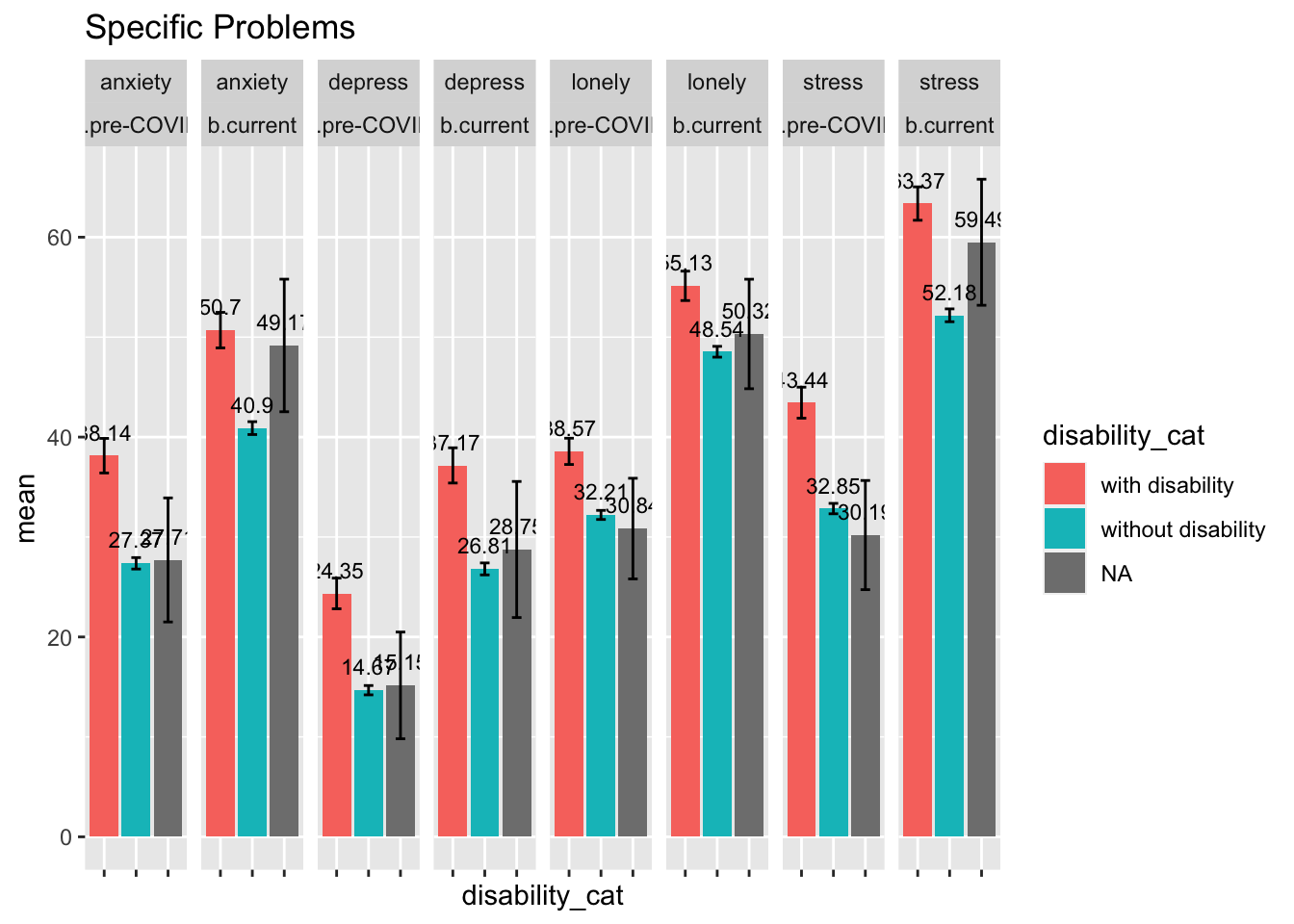
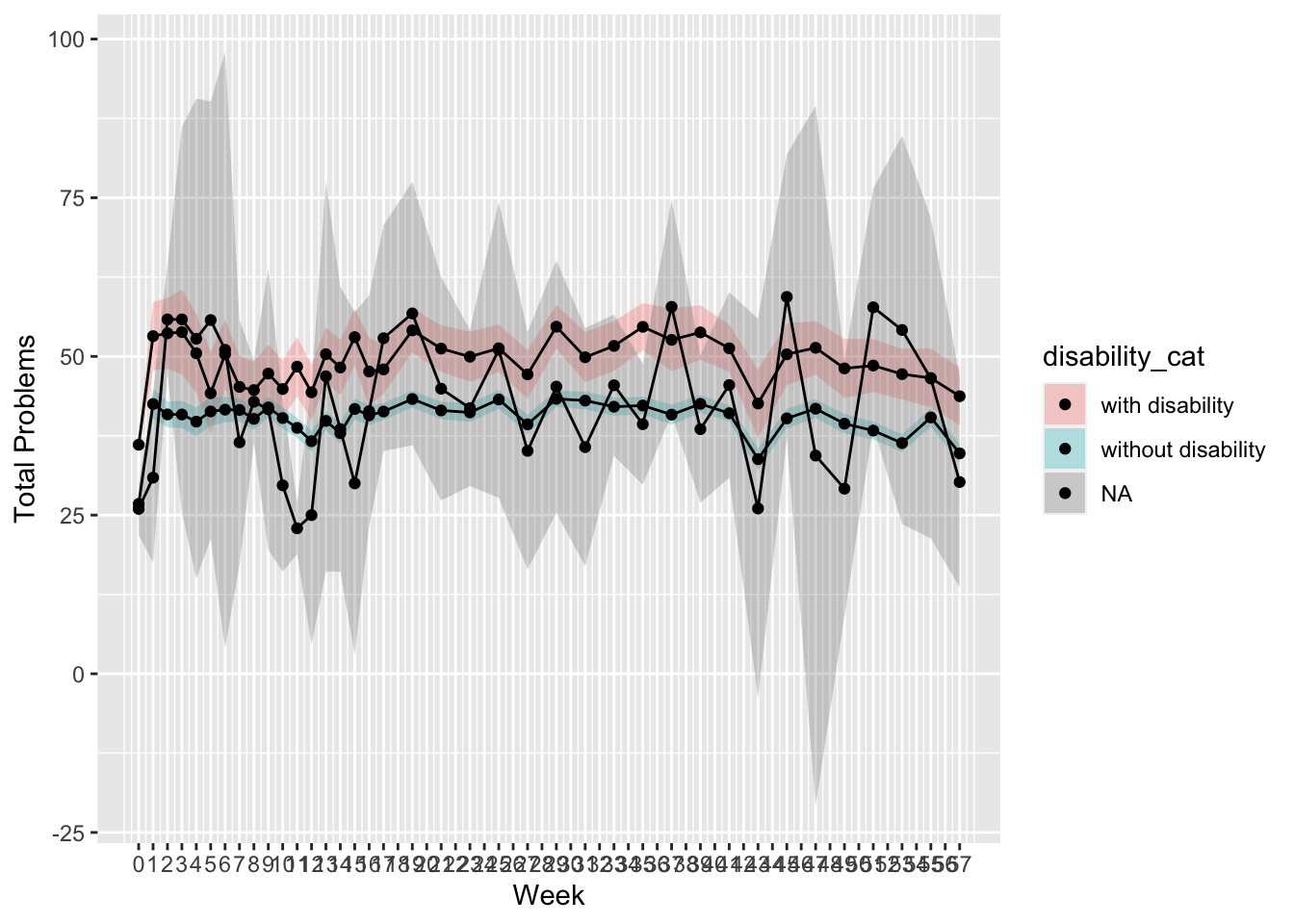
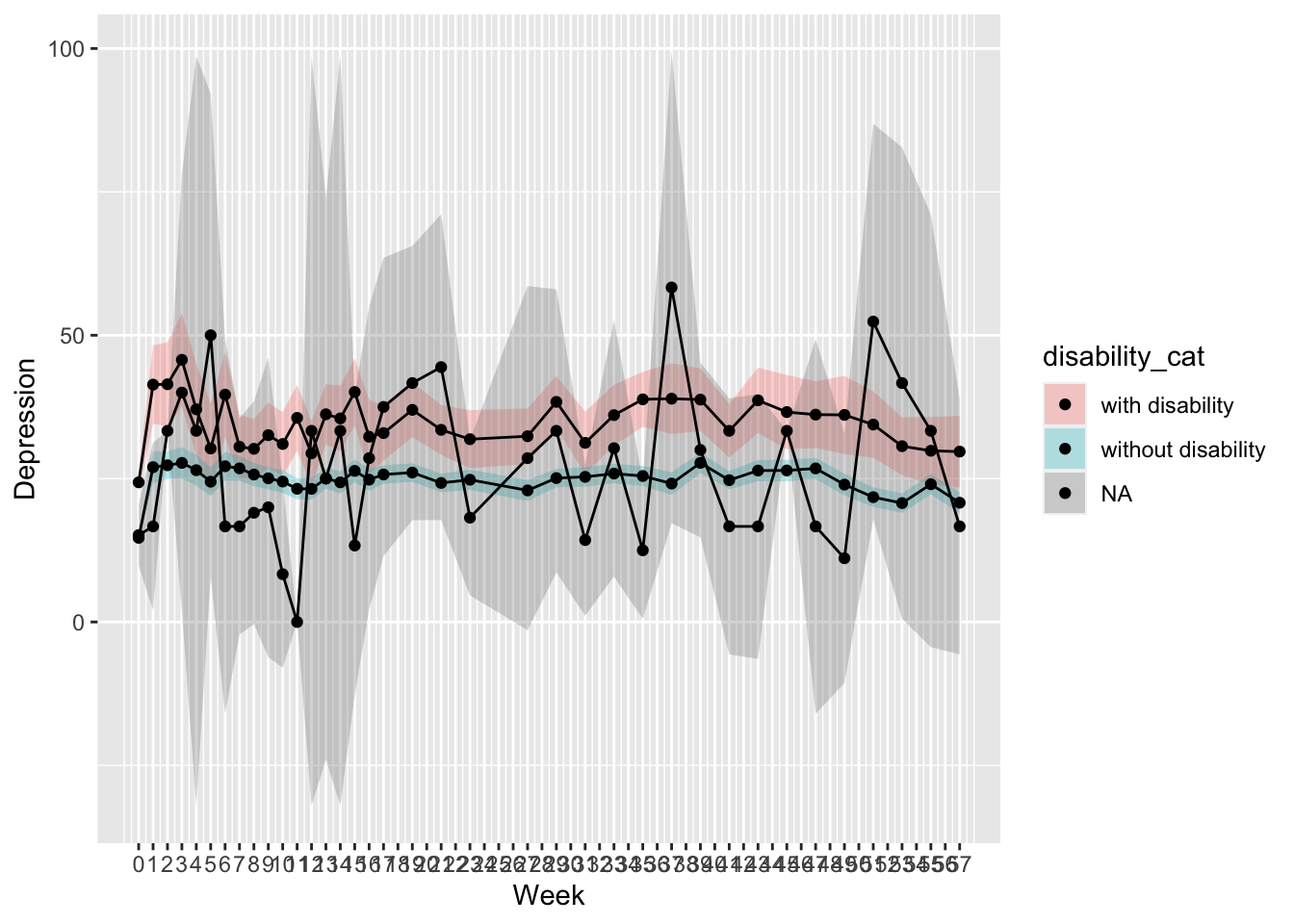
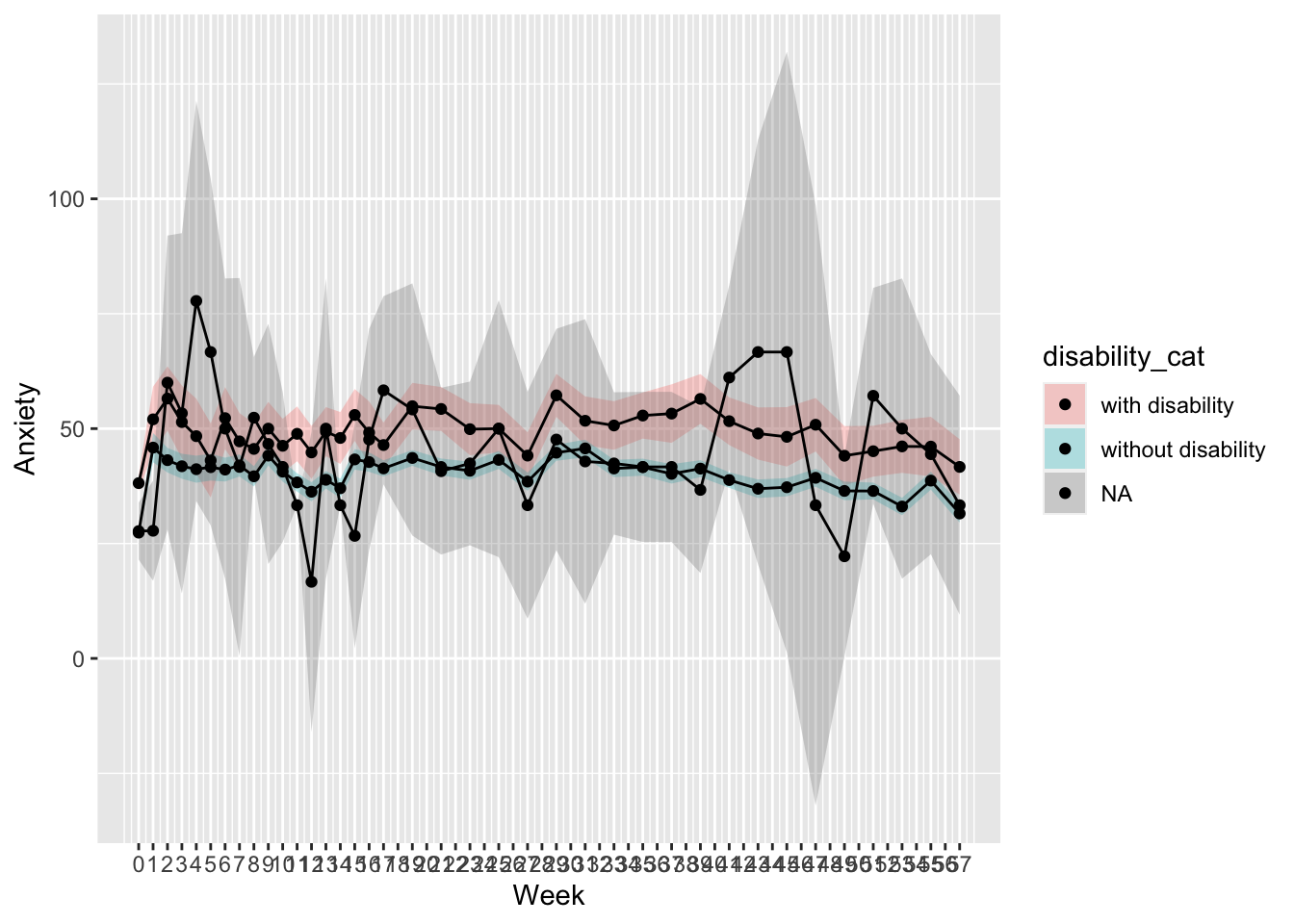
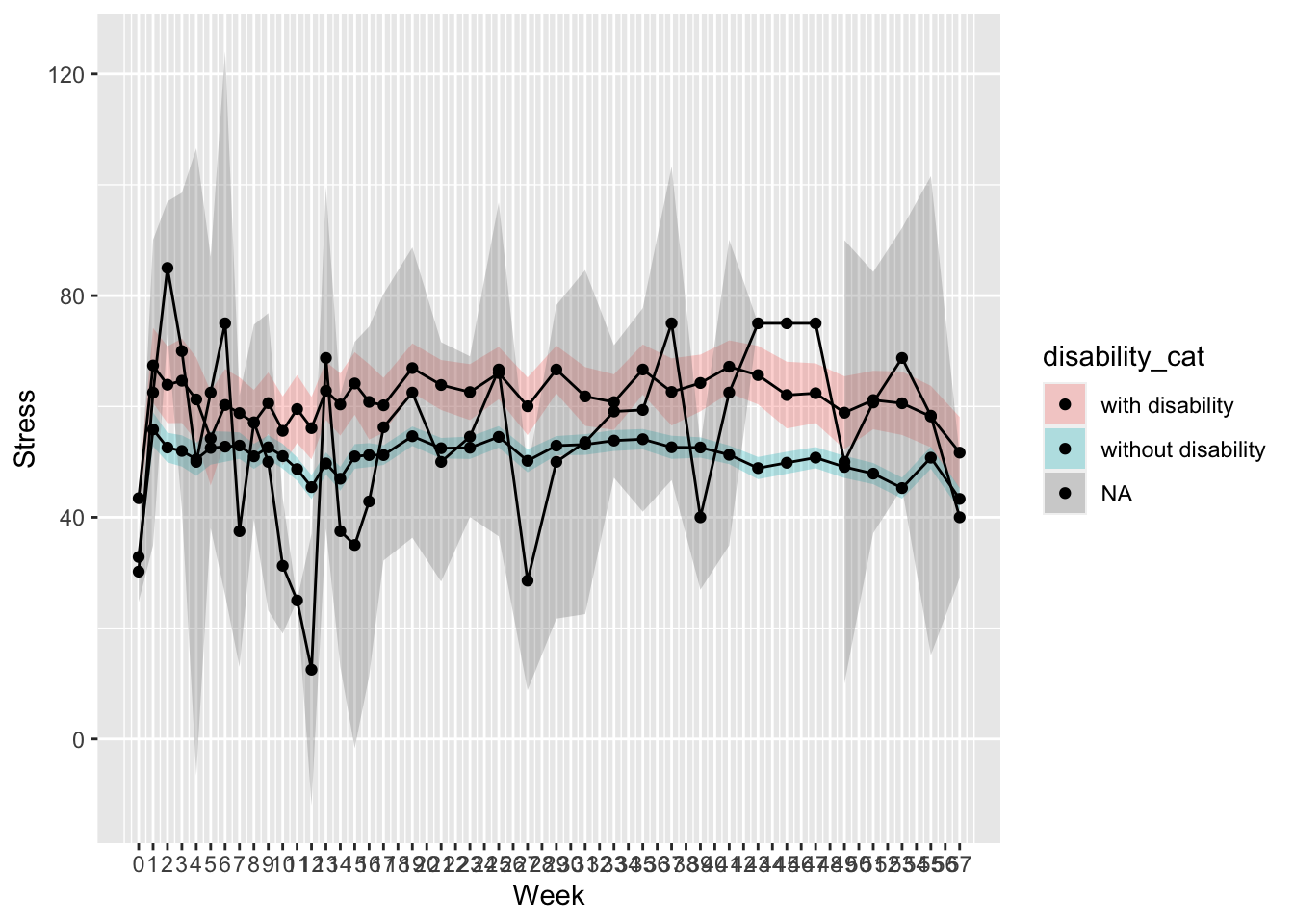
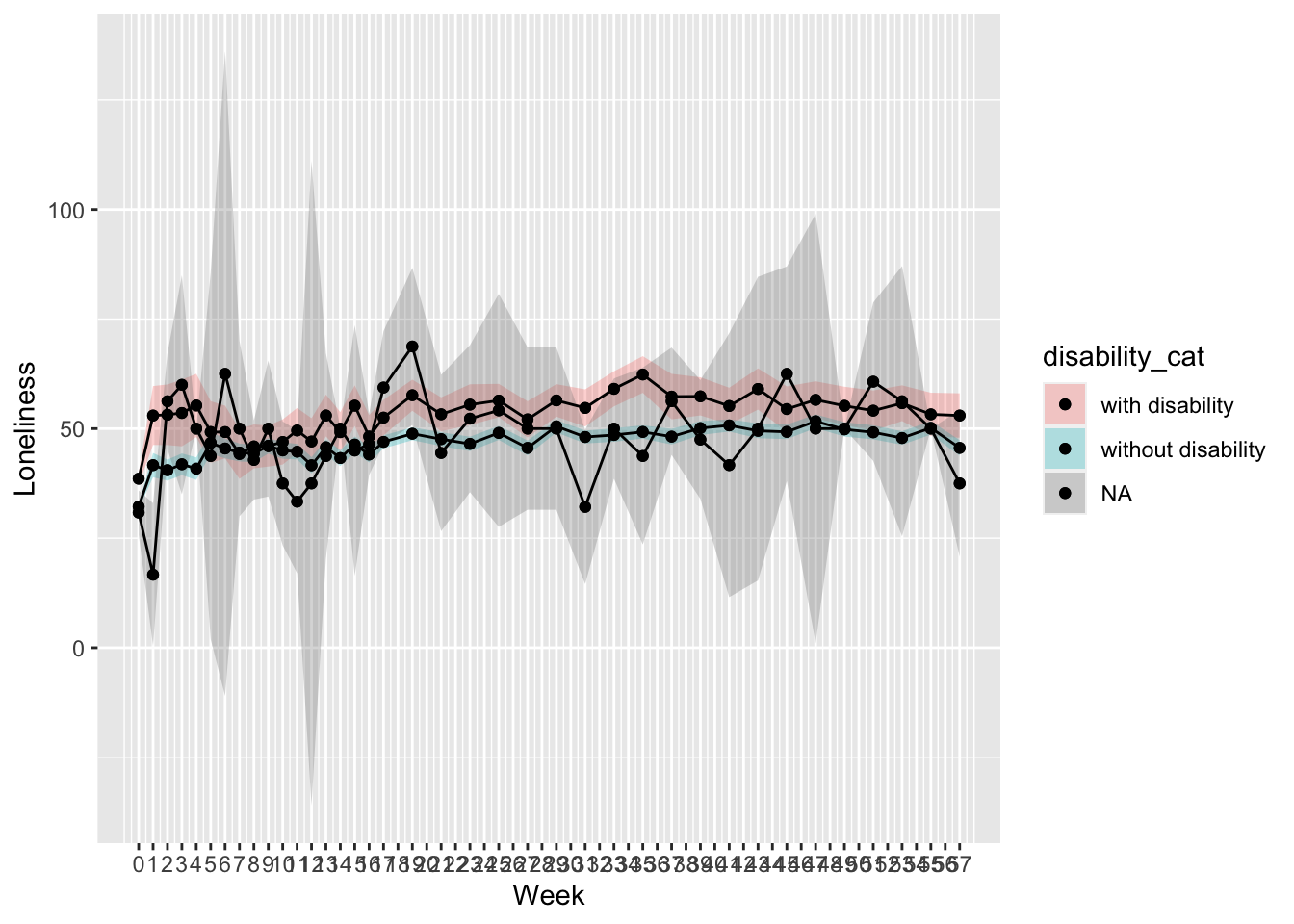
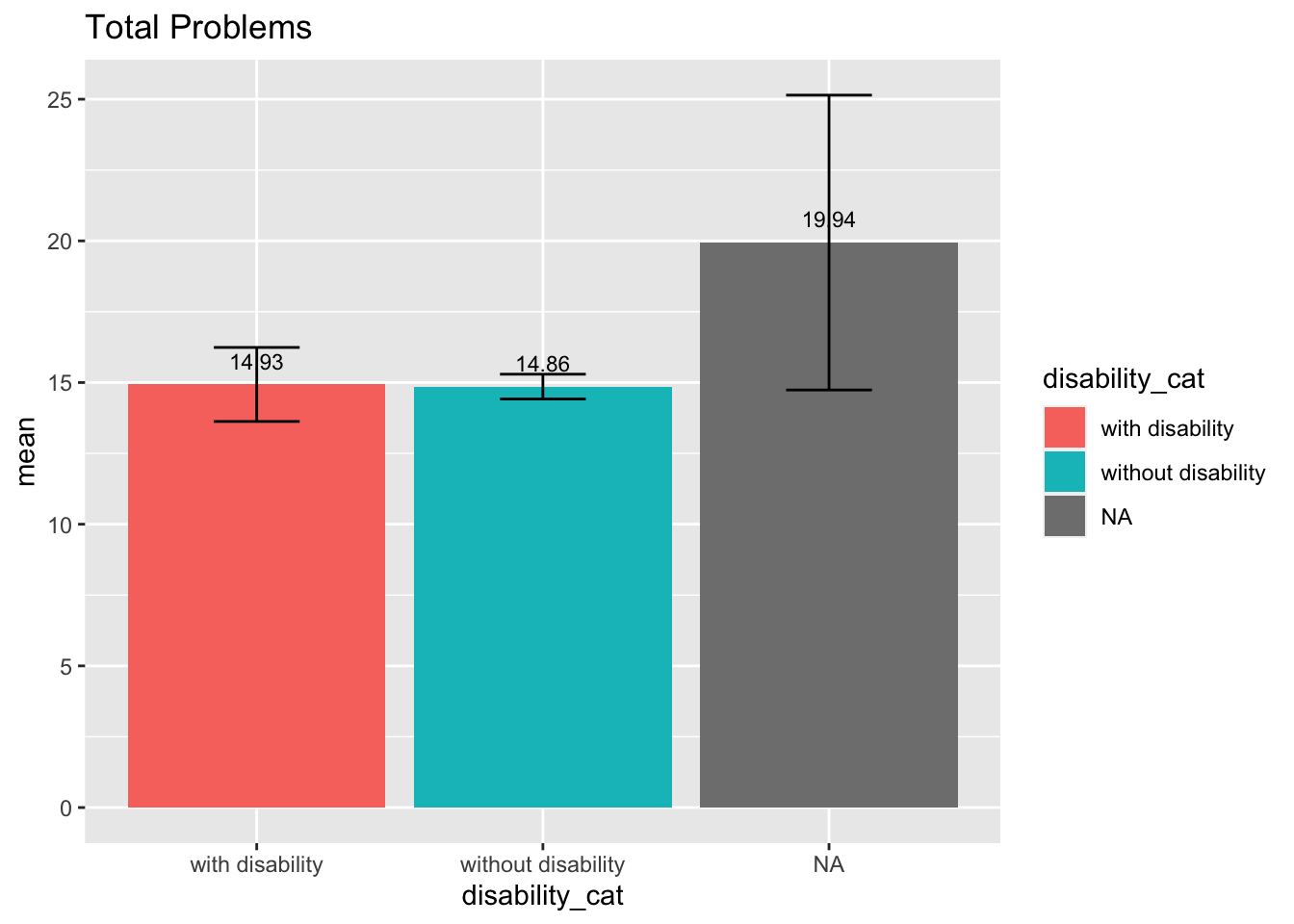

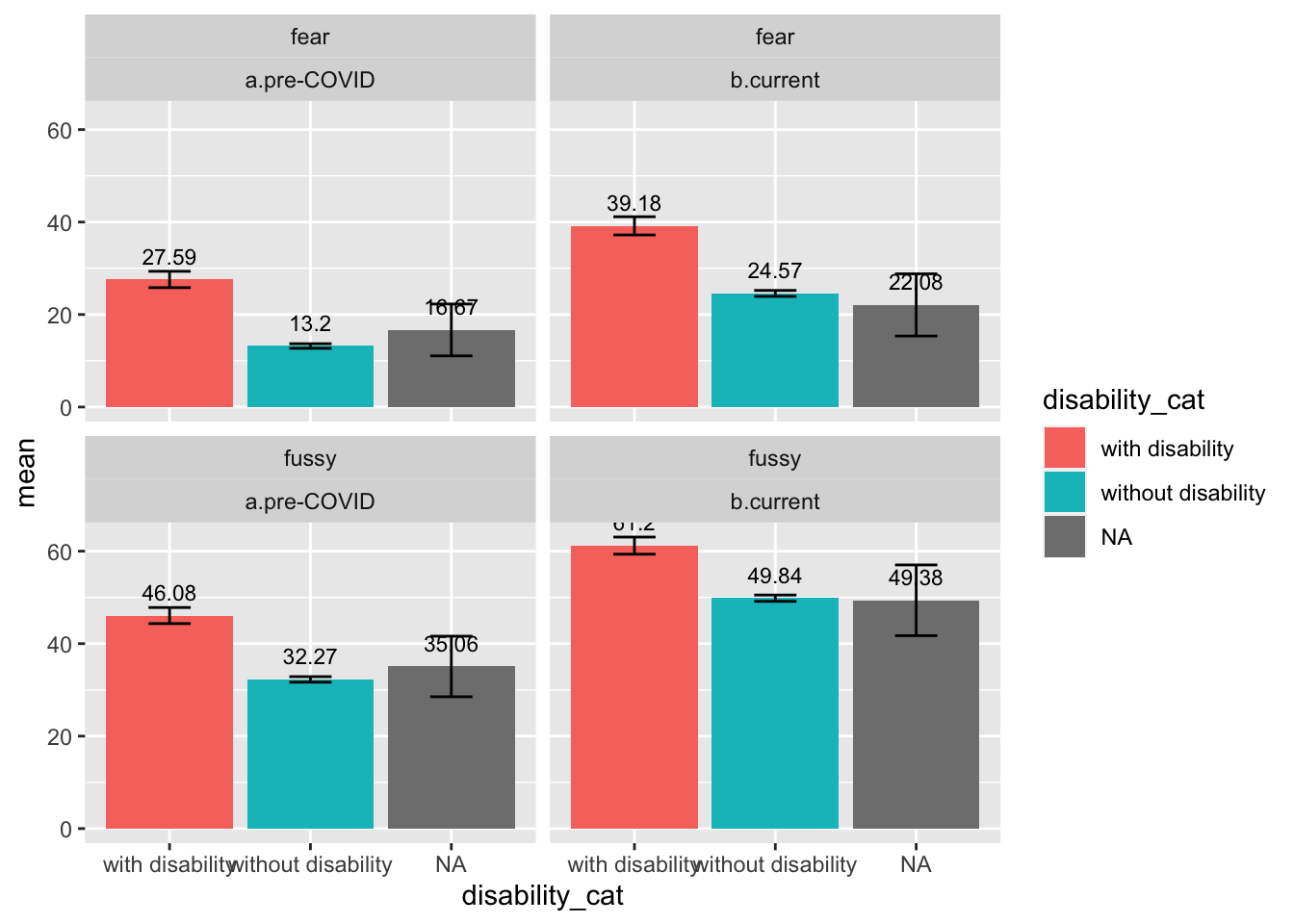
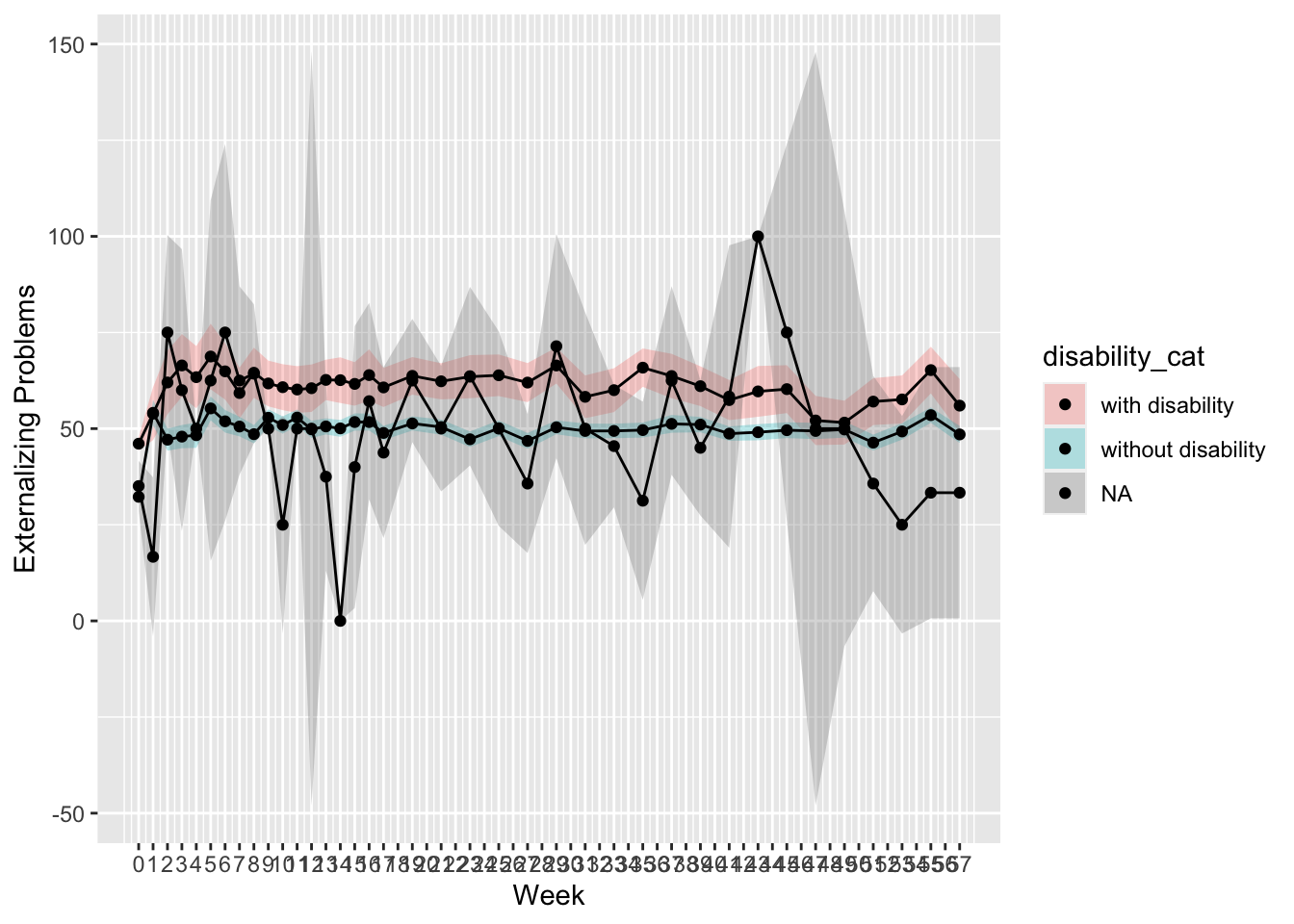
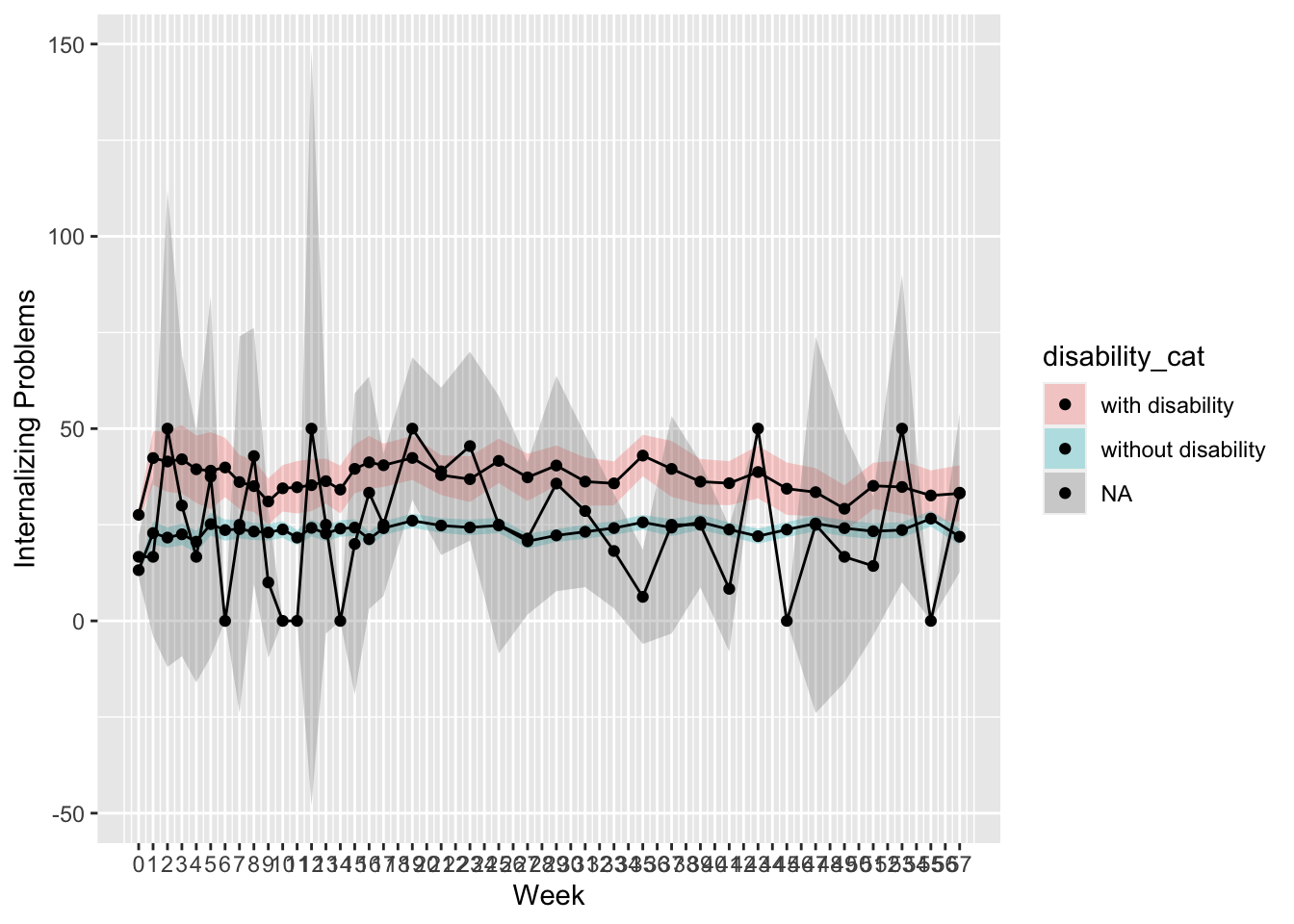
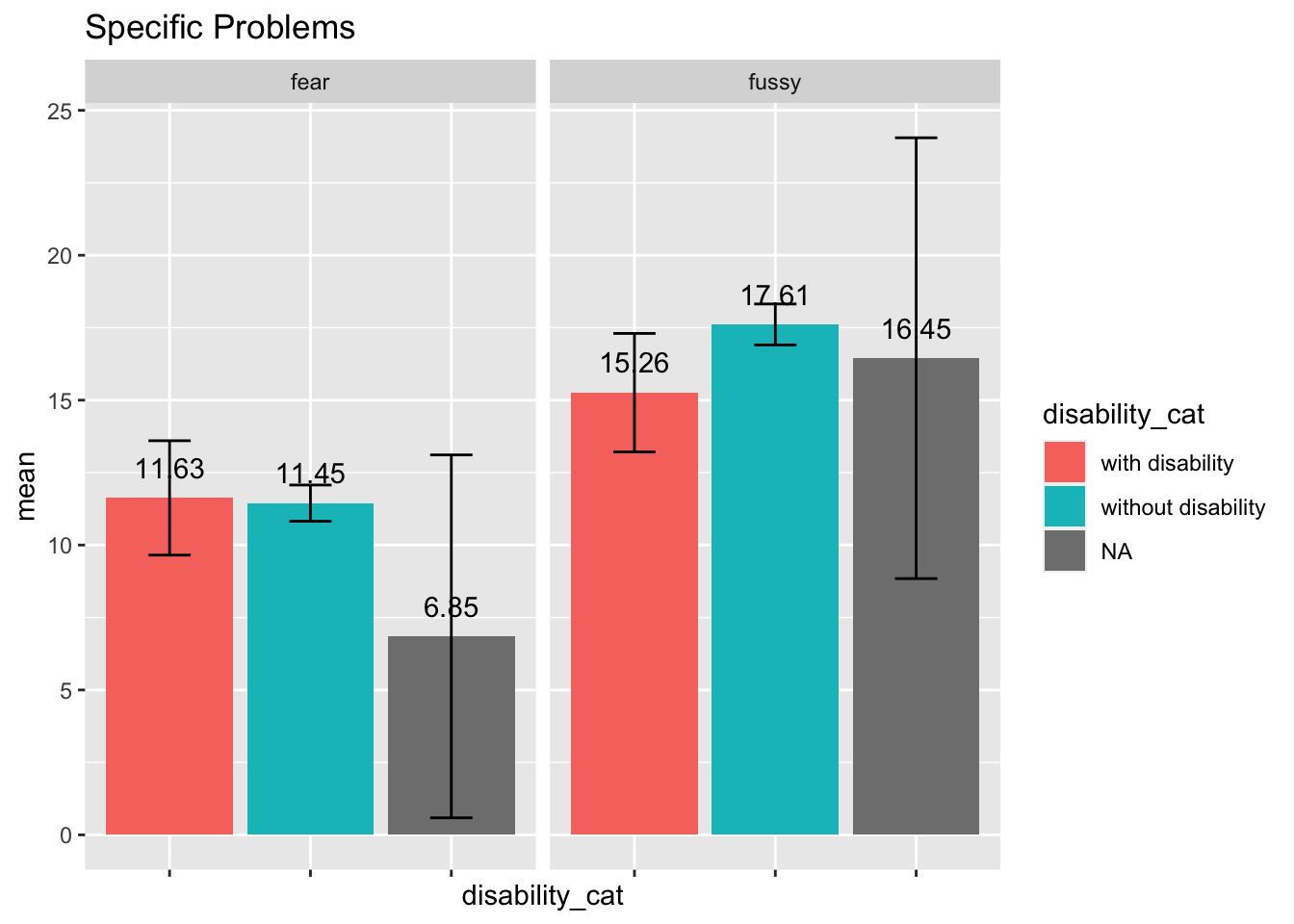
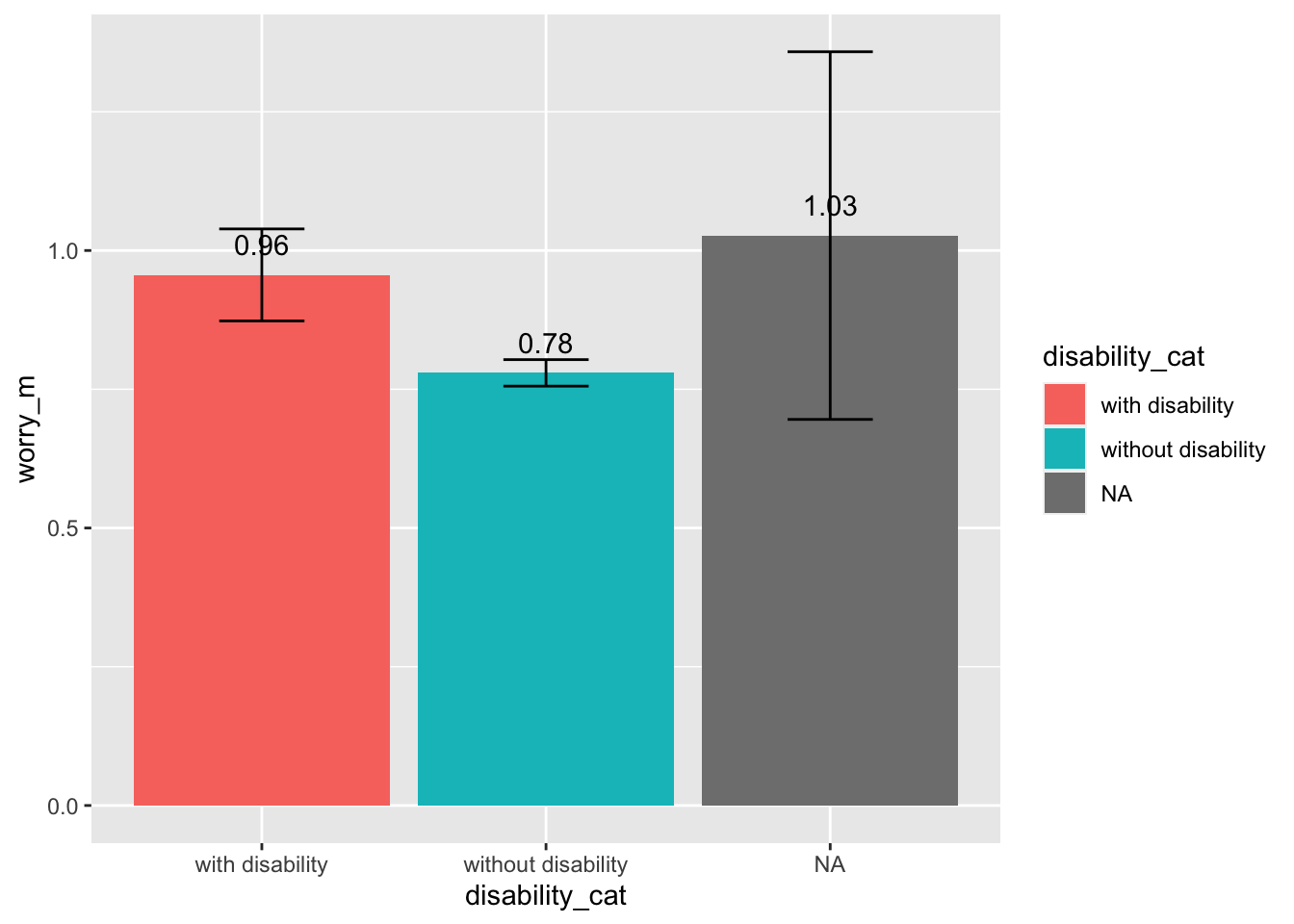
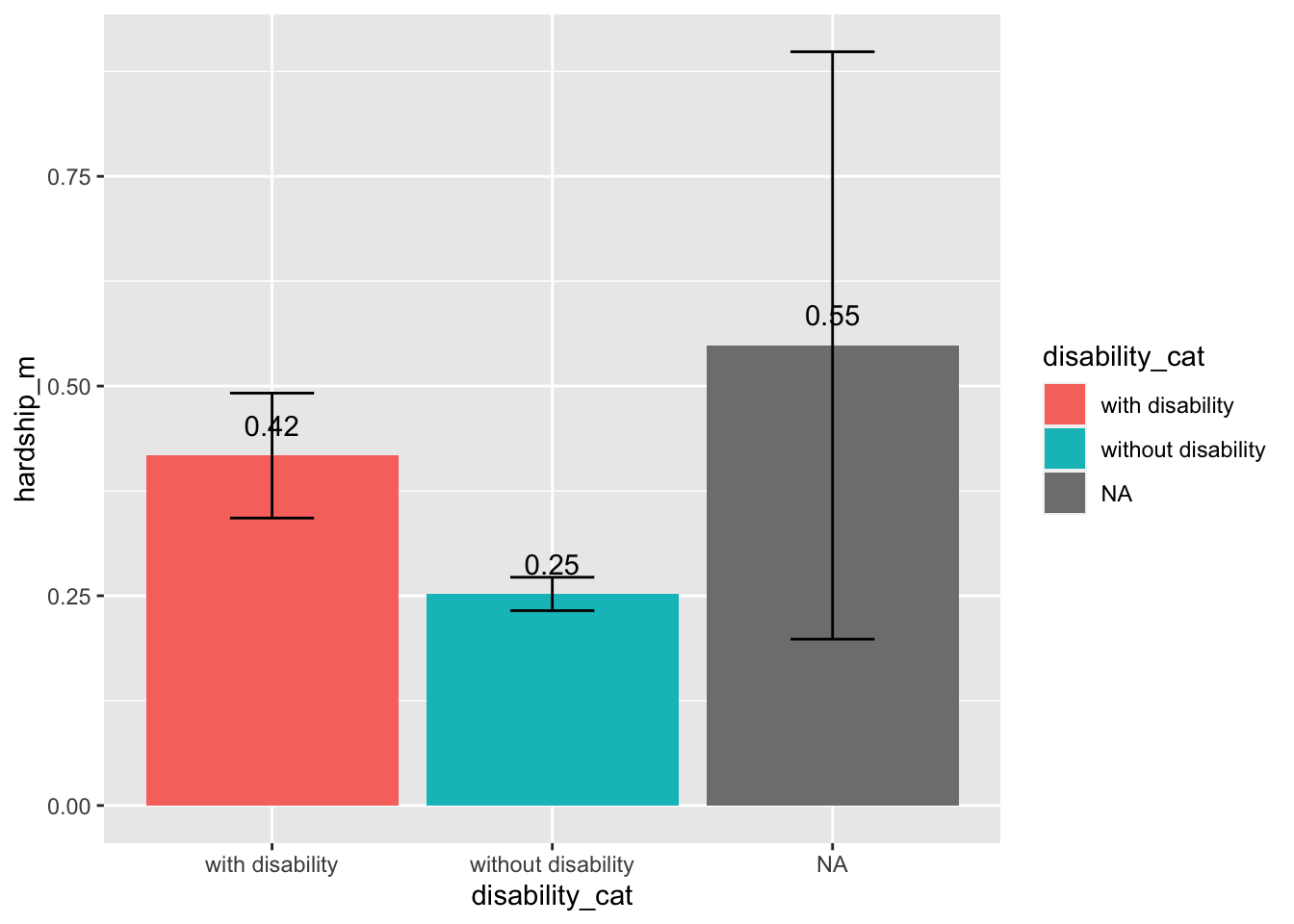
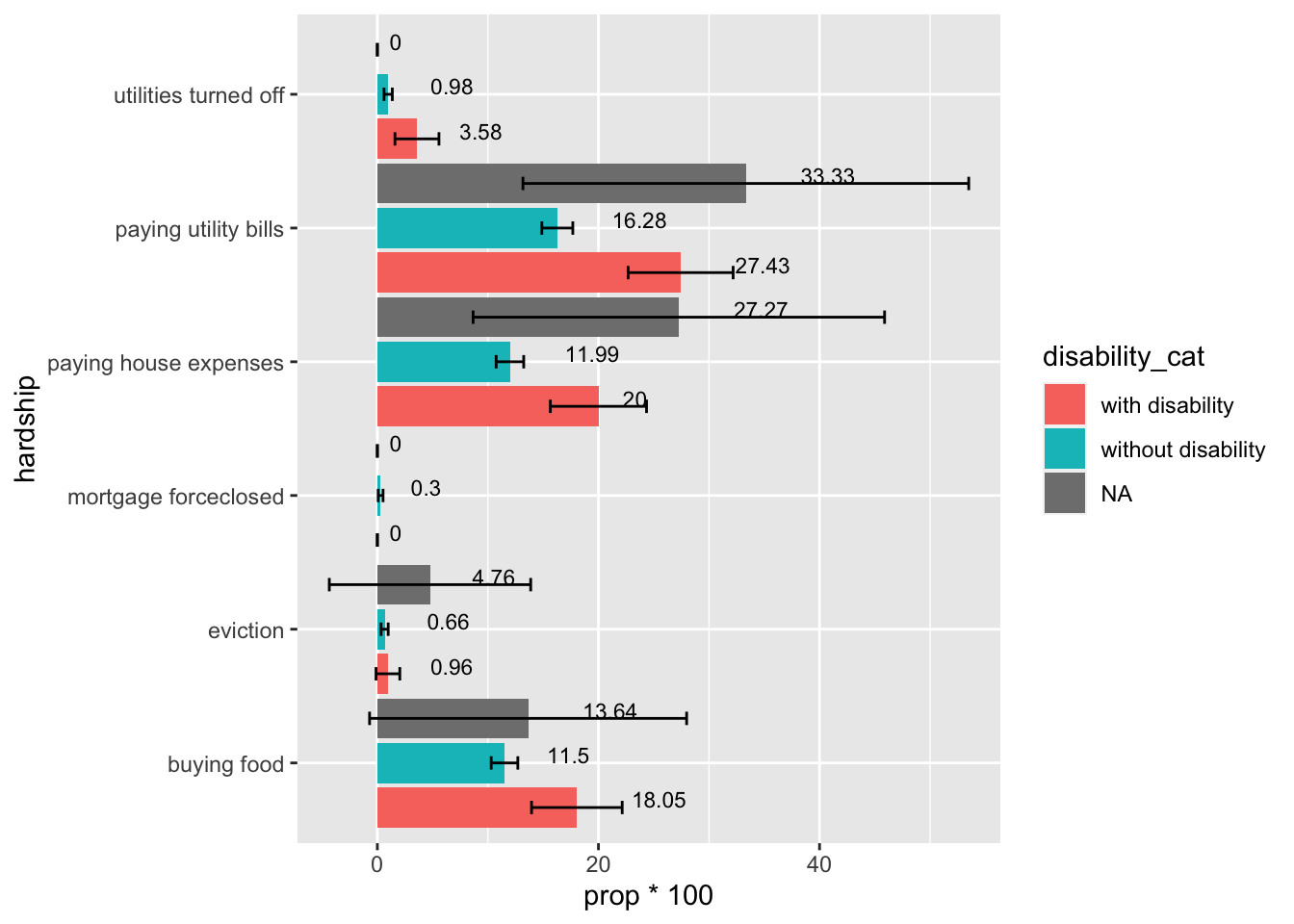
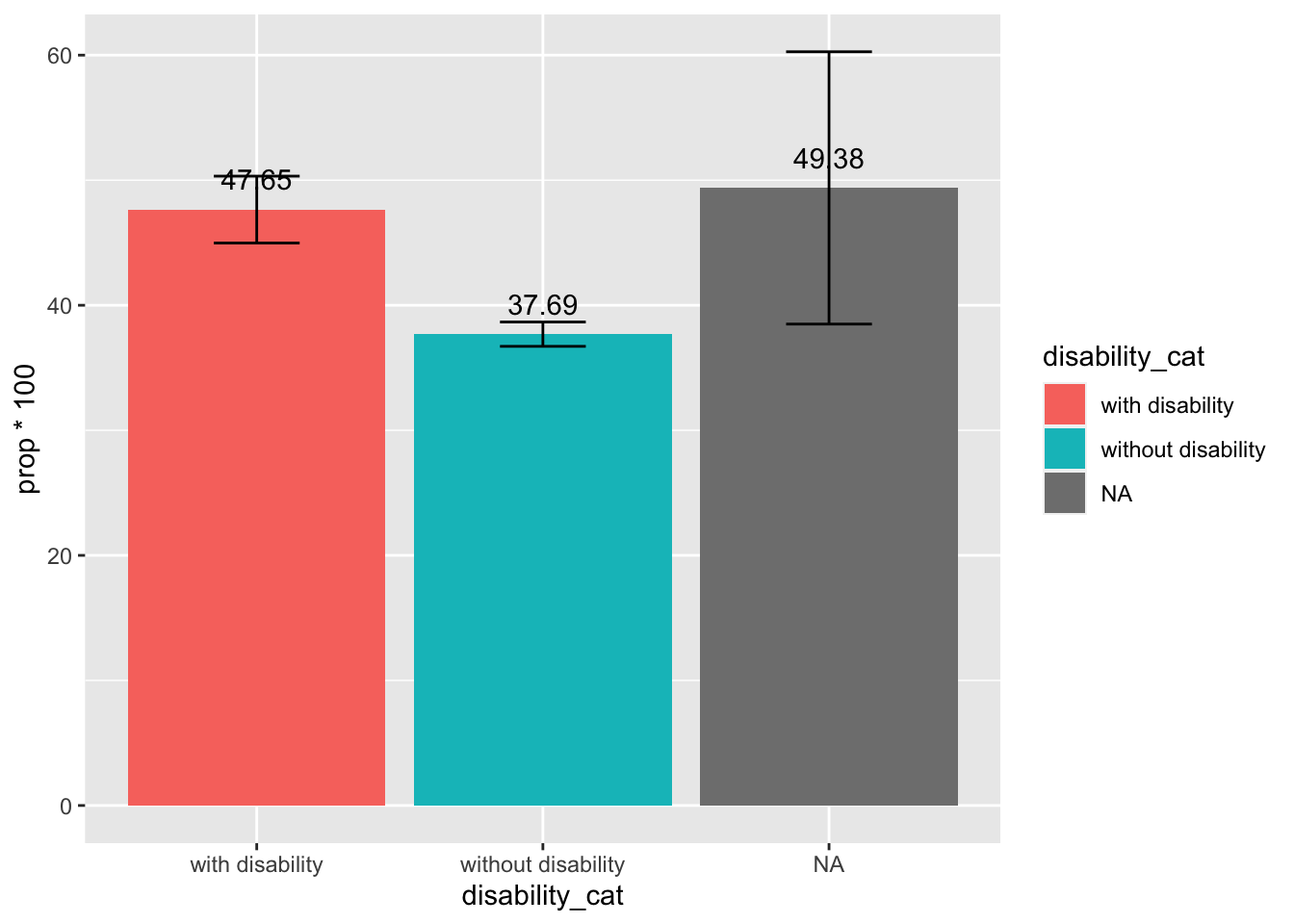
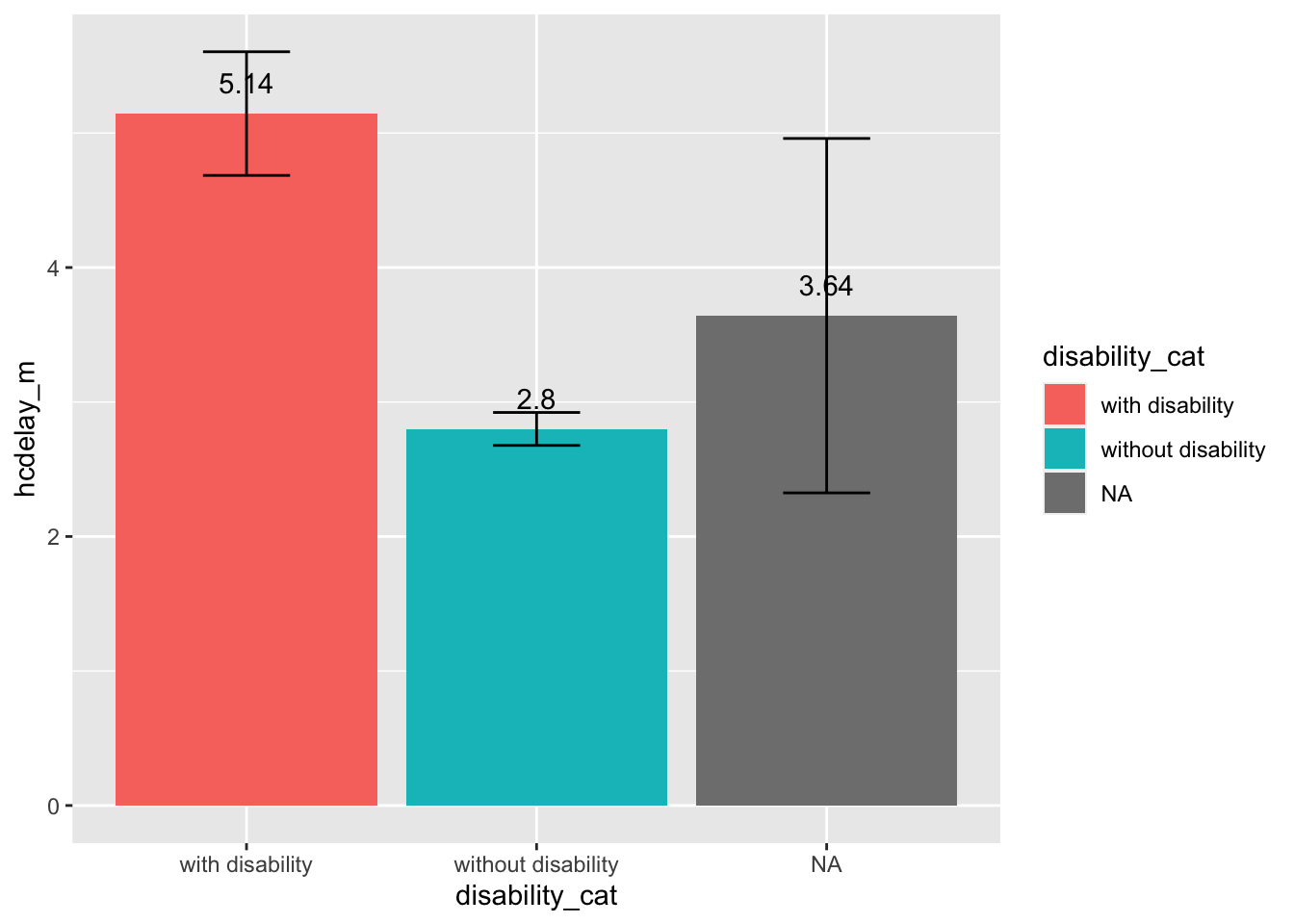
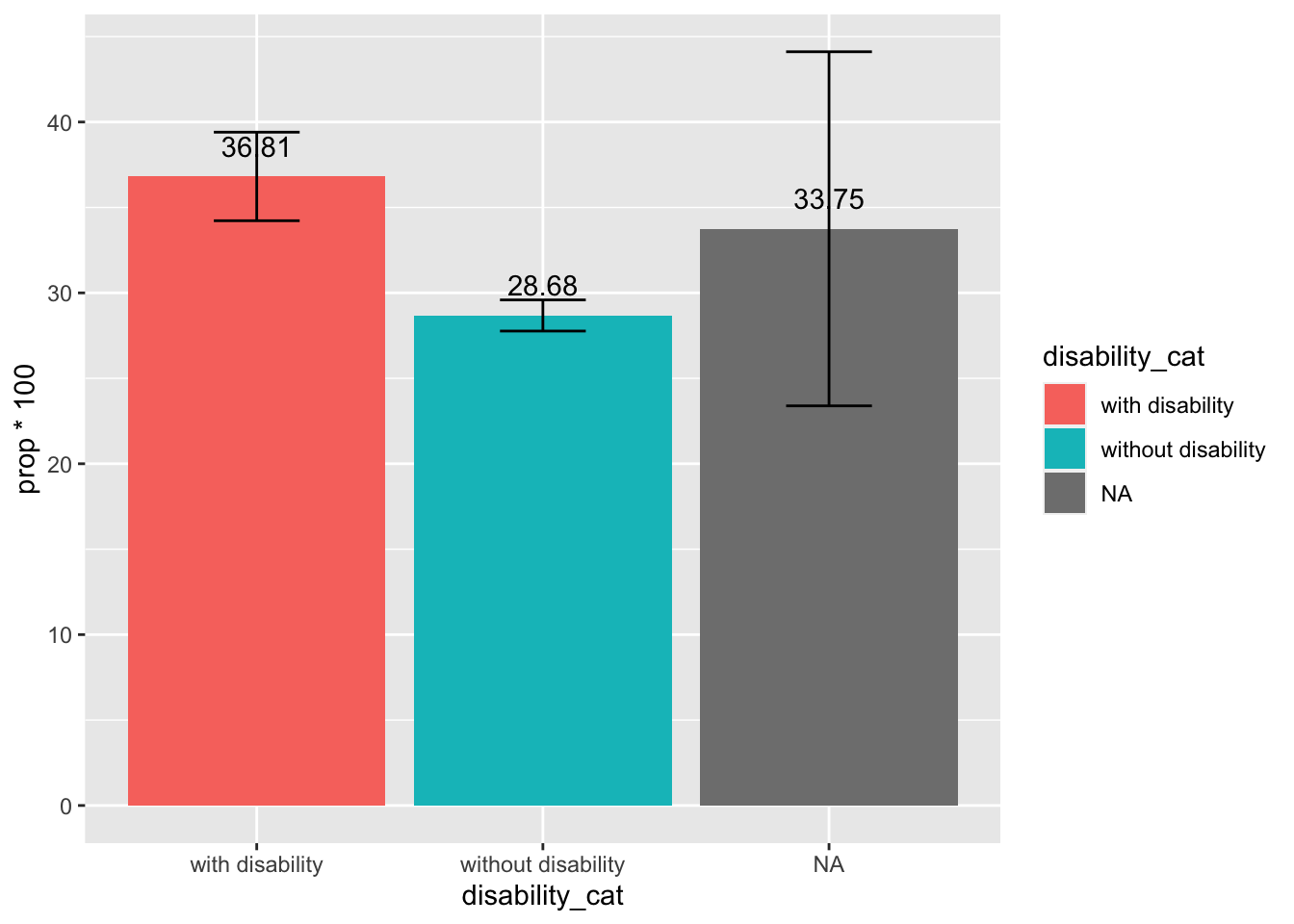
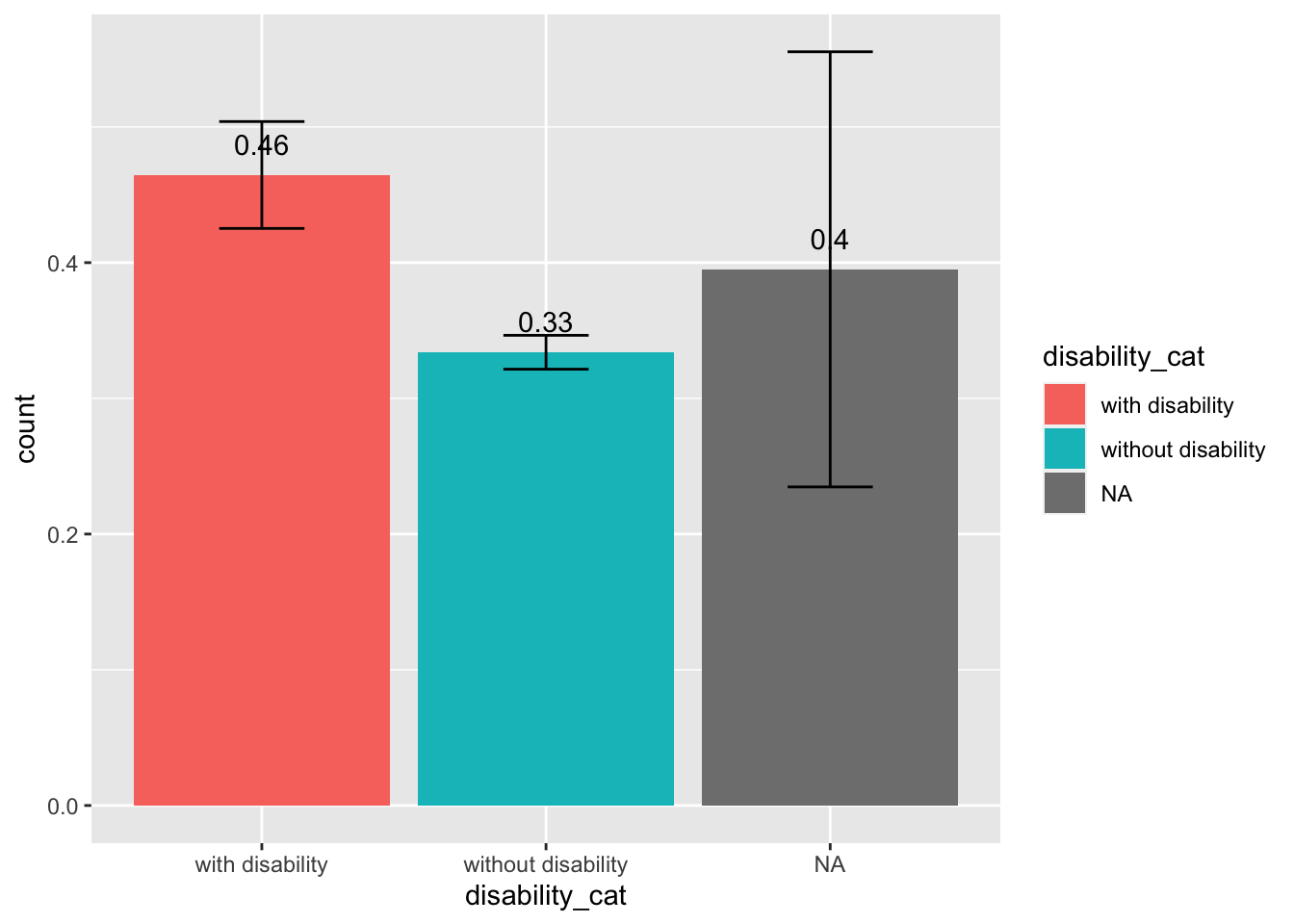
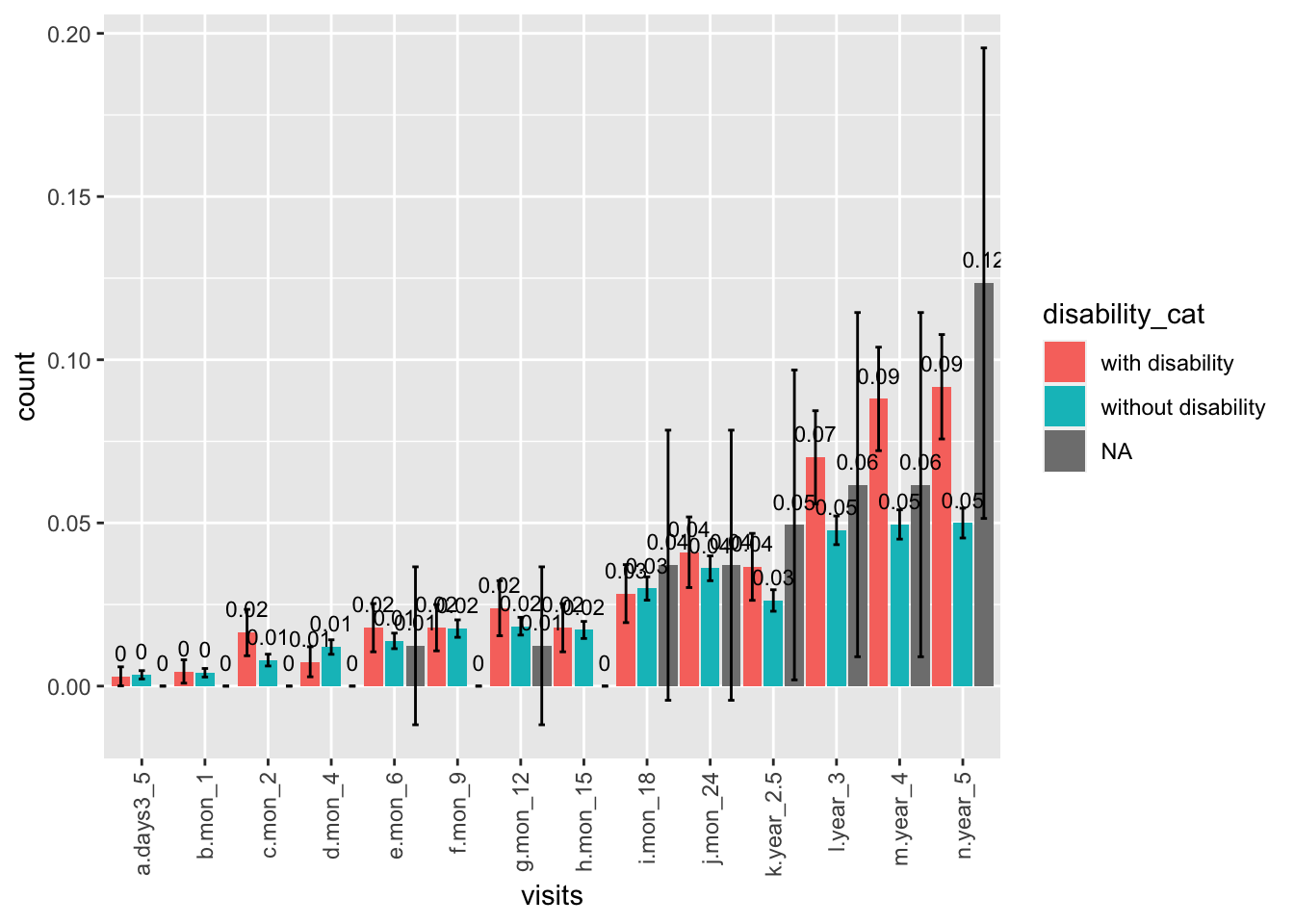
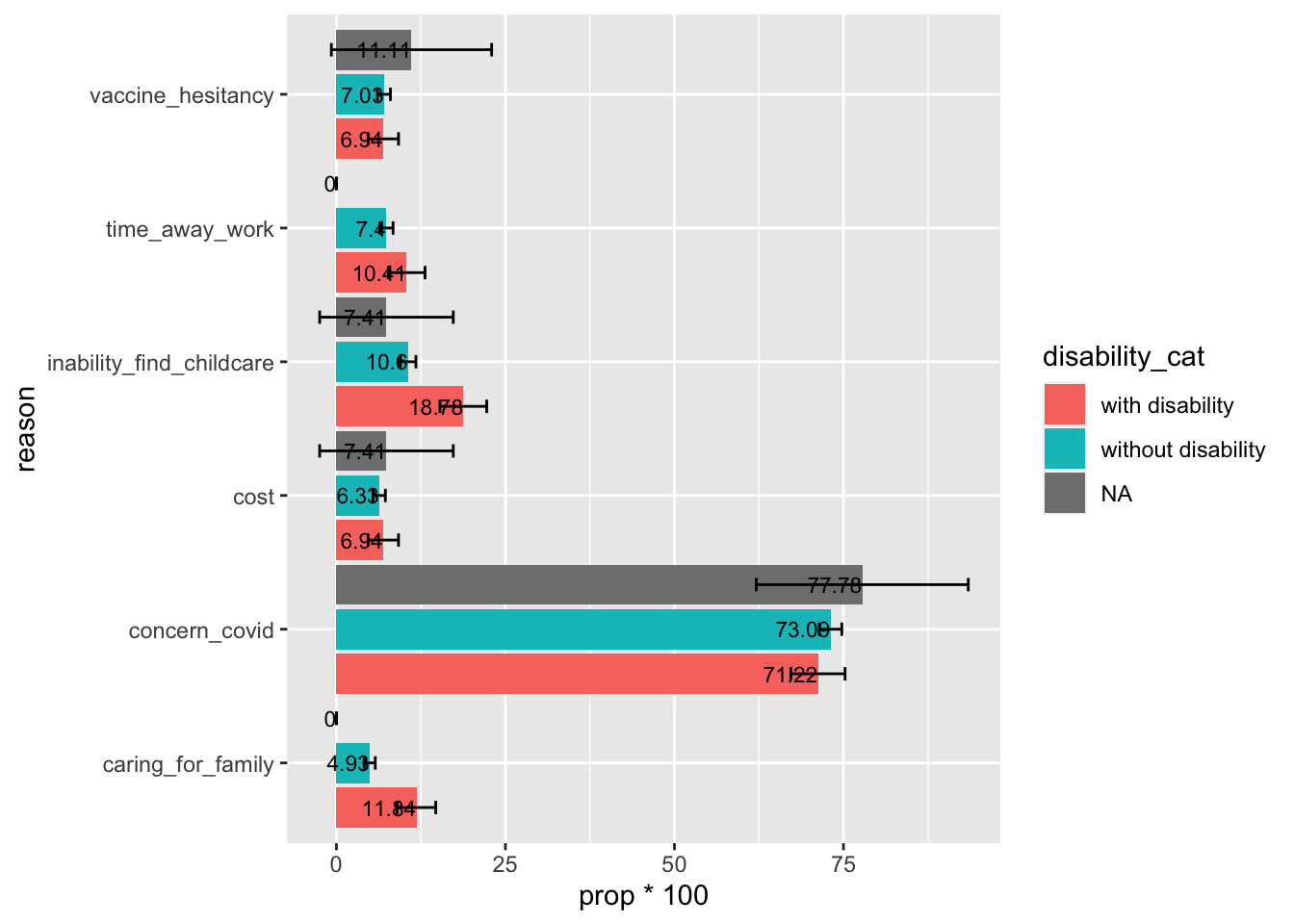
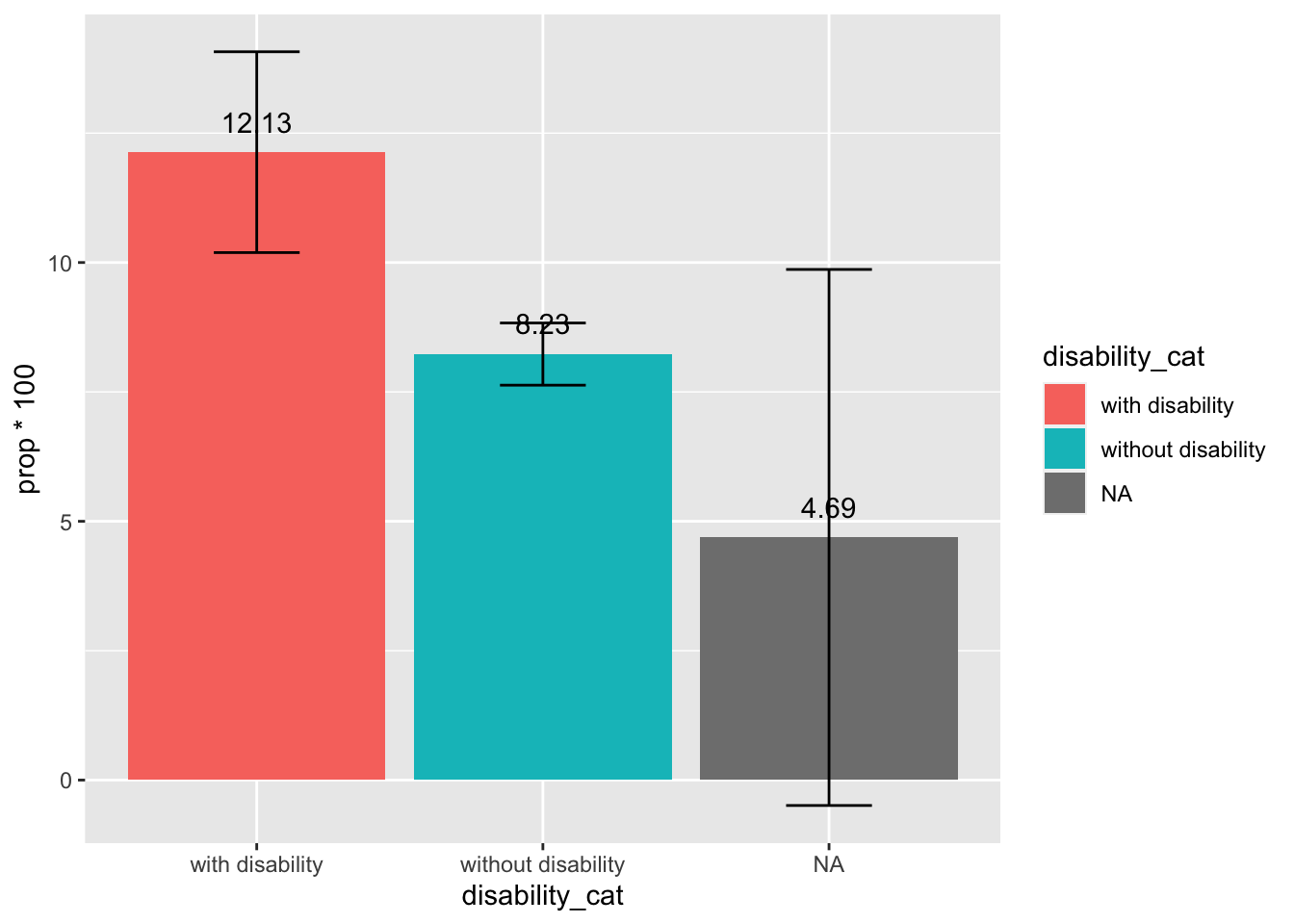



Social Support
Between-Subject Analyses (Group-Level Mean)
Within-Subject Analyses (Individual Pre-Post-COVID Changes)
Among Families of Children with Special Needs n = 107
Associations Between Social Support & Follow-up Child Behavioral Problems
Mediation Analyses: Social Support & Subsequent Caregivers’ Mental Health Problems & Subsequent Children’s Behavioral Problems
Path a:
Path b:
Testing Indirect Effect using RMediation Method
Among Families of Children without Special Needs n = 789
Associations Between Social Support & Follow-up Child Behavioral Problems
Mediation Analyses: Social Support & Subsequent Caregivers’ Mental Health Problems & Subsequent Children’s Behavioral Problems
Path a:
Path b:
Testing Indirect Effect using RMediation Method